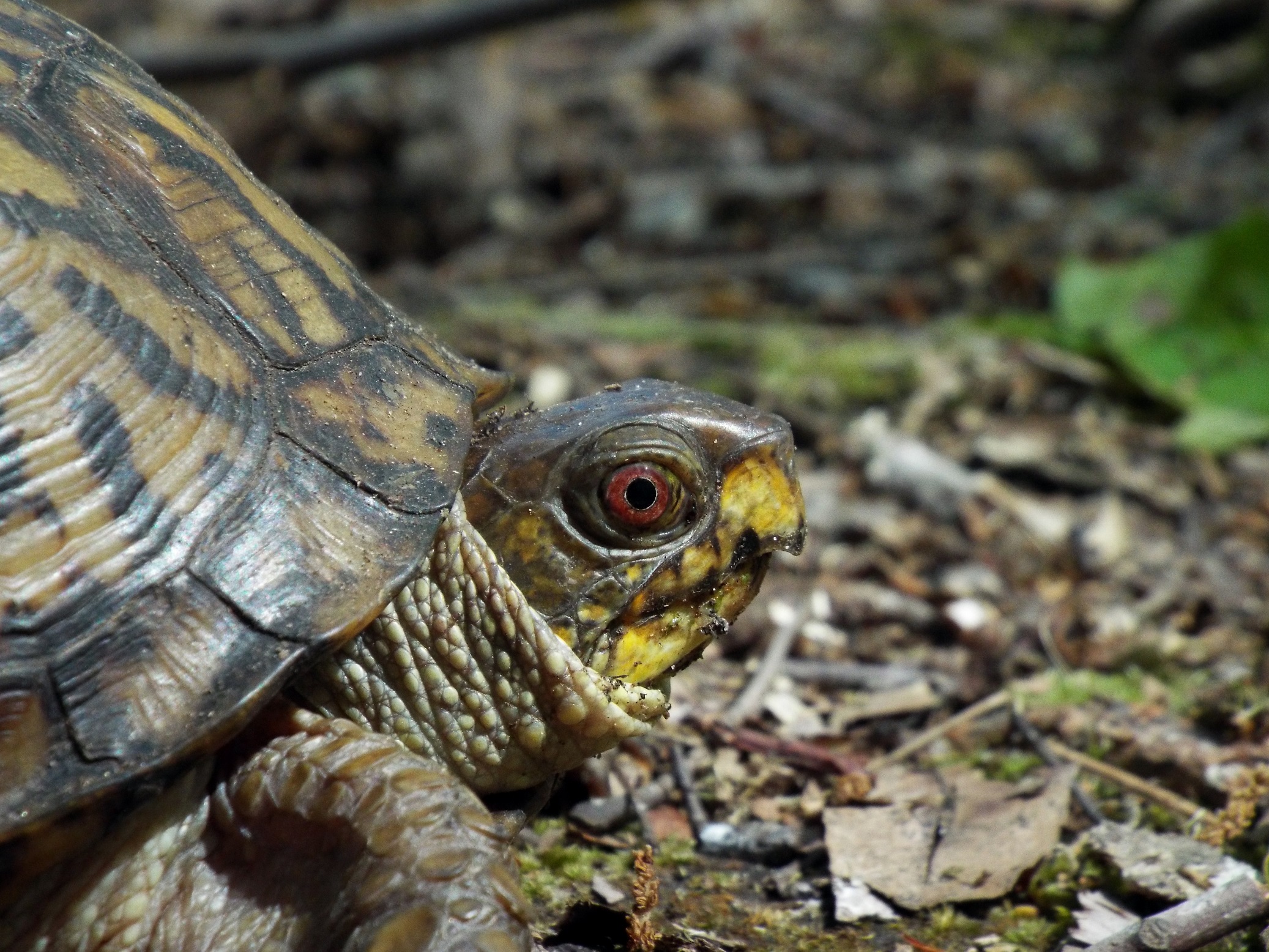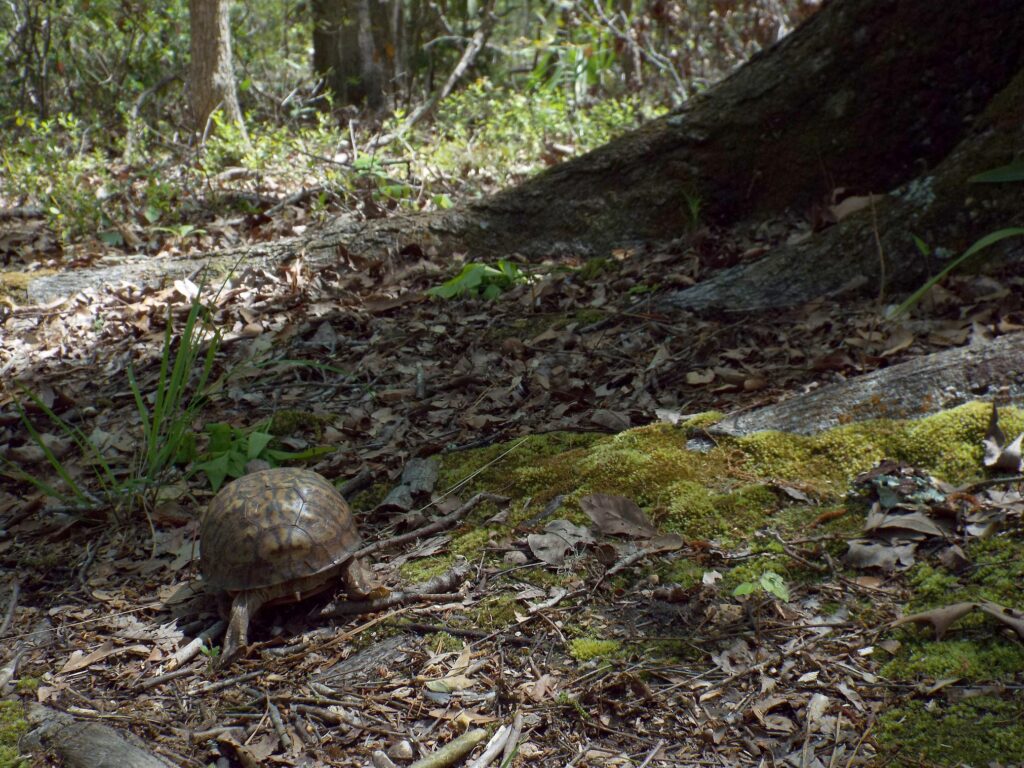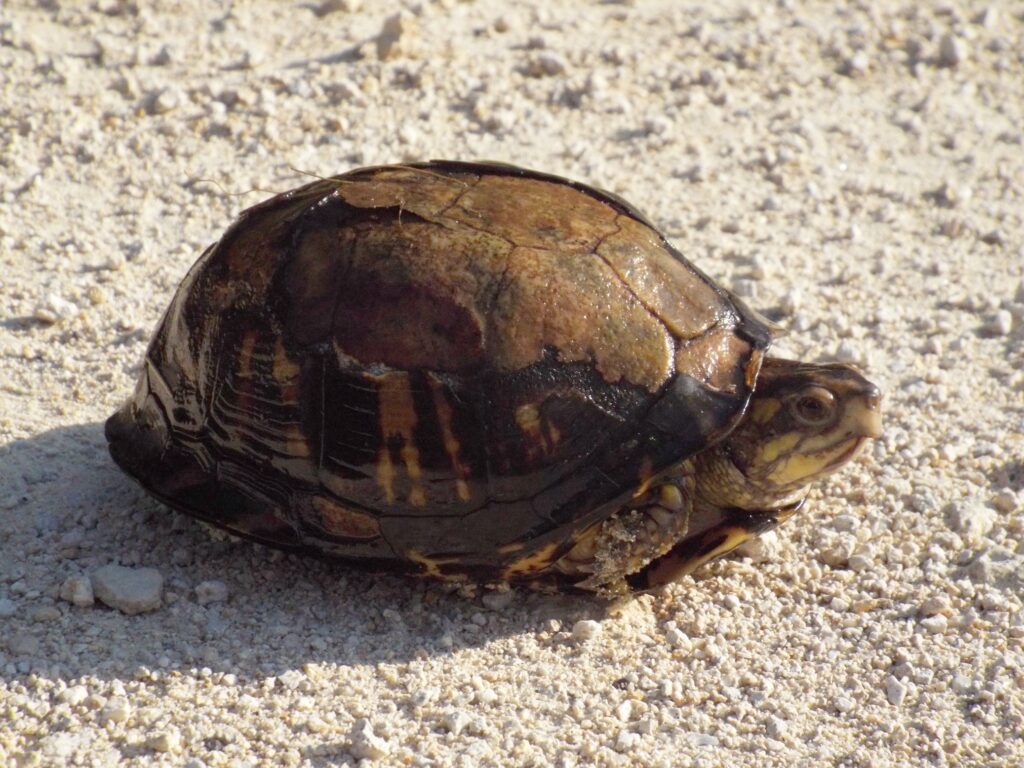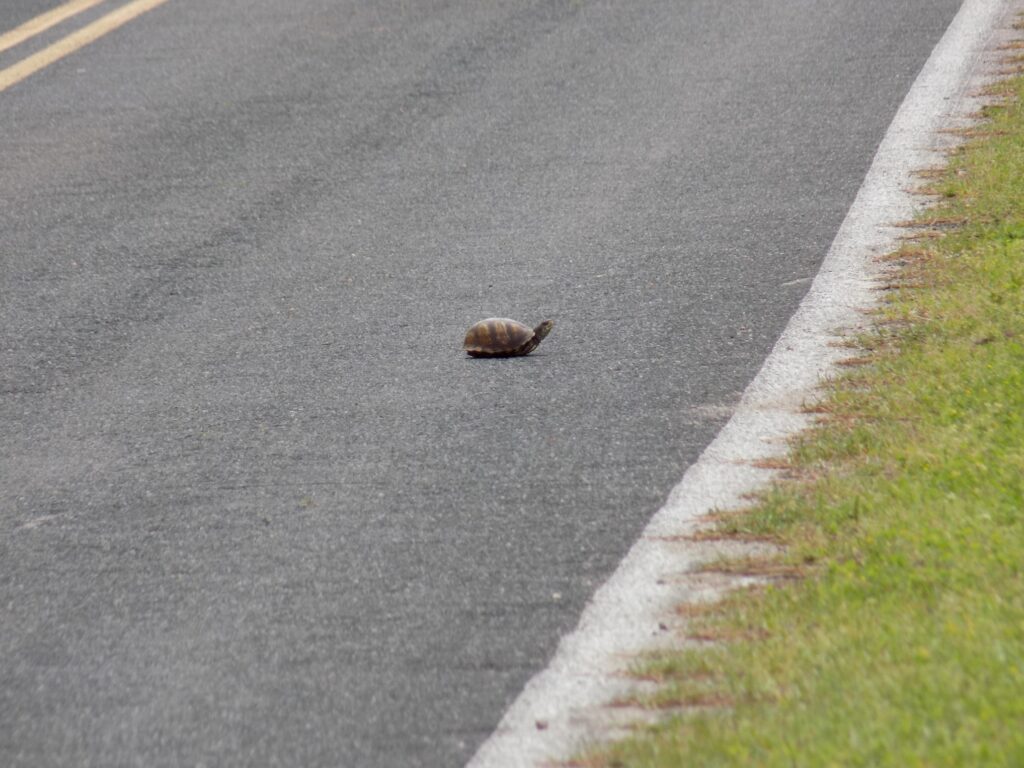




This week for Flora and Fauna Friday we have a compact reptile found around the state: the Eastern Box Turtle (Terrapene carolina carolina).
The Eastern Box Turtle is the only subspecies of the Common Box Turtle found in South Carolina. They are a terrestrial turtle, not a tortoise. (Tortoises are vegetarians and have elephant-like rear feet.) Our Turtle can be found in almost every woodland habitat in the state and even in some shallow wetlands. They are true omnivores and their diet consists primarily of invertebrates, mushrooms, and fruits but they’ll happily eat amphibians, reptiles, carrion, and some kinds of vegetation. However, they lack teeth and can’t eat seeds, nuts, or most plants. They’re a small turtle, typically only reaching 6 inches long and a pound in weight. Yet they are incredibly long lived and slow growing. The overwhelming majority of Box Turtles never make it to adulthood as more than three-quarters never make it past the first year. It takes them a decade plus to reach sexual maturity. Box Turtles eventually stop growing at a certain size, but they don’t stop living. They’ve been recorded, on multiple occasions, to handily exceed 100 years in age.
Box Turtles have a high domed shell and stubby feet. They also have a double hinged plastron (the lower half of the shell) which allows them to fully retract their bodies within their shells and leave nothing exposed to danger. This is where they get the name of “Box” Turtle, as they close up tight like a box. Box Turtles are nearly invulnerable in this state to everything but Black Bears. Males are beautifully patterned across their bodies in yellow, orange, and red. Each scale and scute adorned with prehistoric prints of fiery paints. Females are duller but no less aesthetic. Aggressive reds are avoided in favor of crisp yellows, wisps of orange, and intricate matte interplays of sand, bone, and slate. No two turtles are marked the same. Here in the Lowcountry both males and females have red eyes, despite what you may read in field guides. Though, males have a white base color to their iris which makes their eyes appear scarlet red to rosy pink. Females are a deeper red, from ruby to brick.